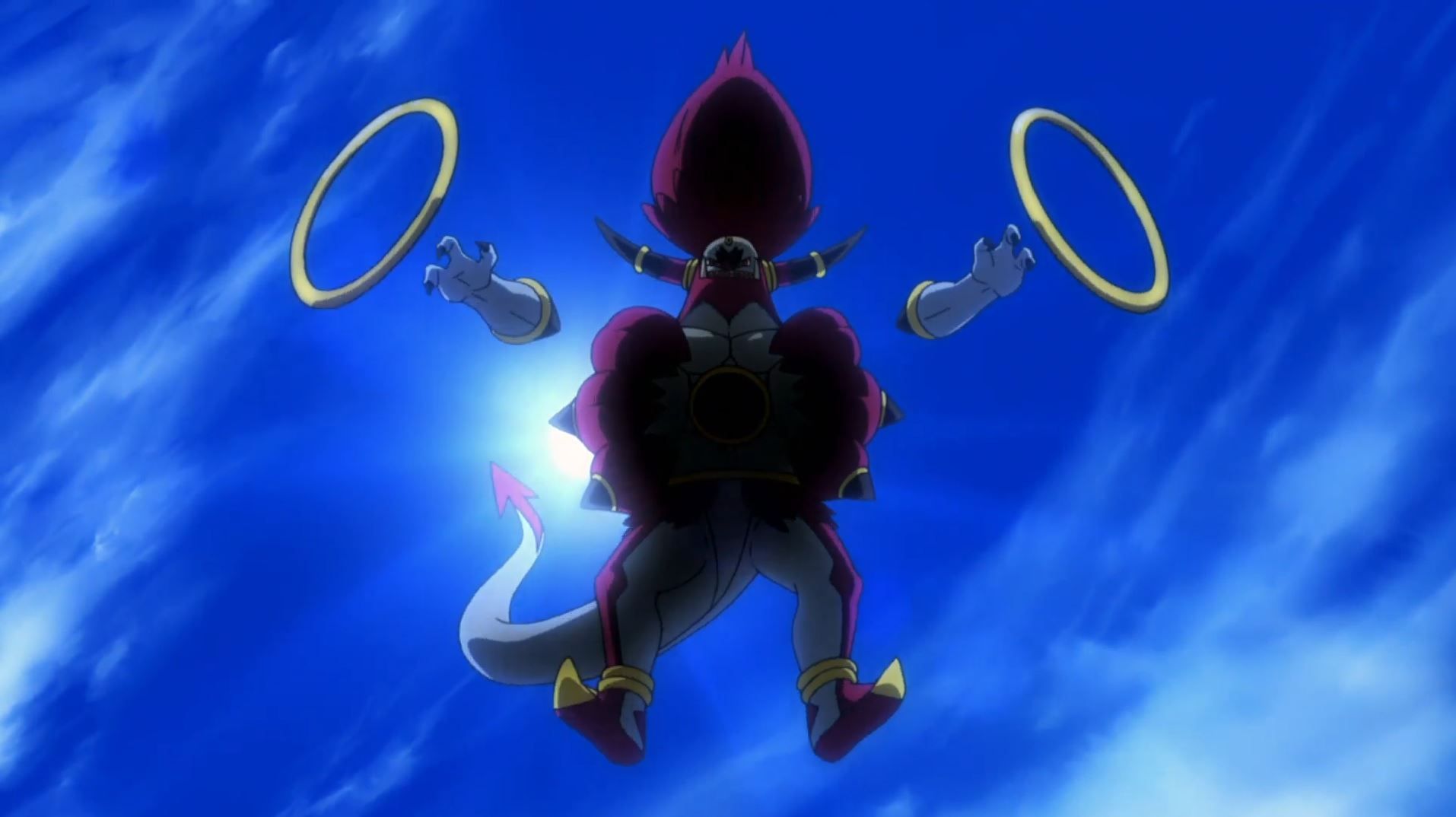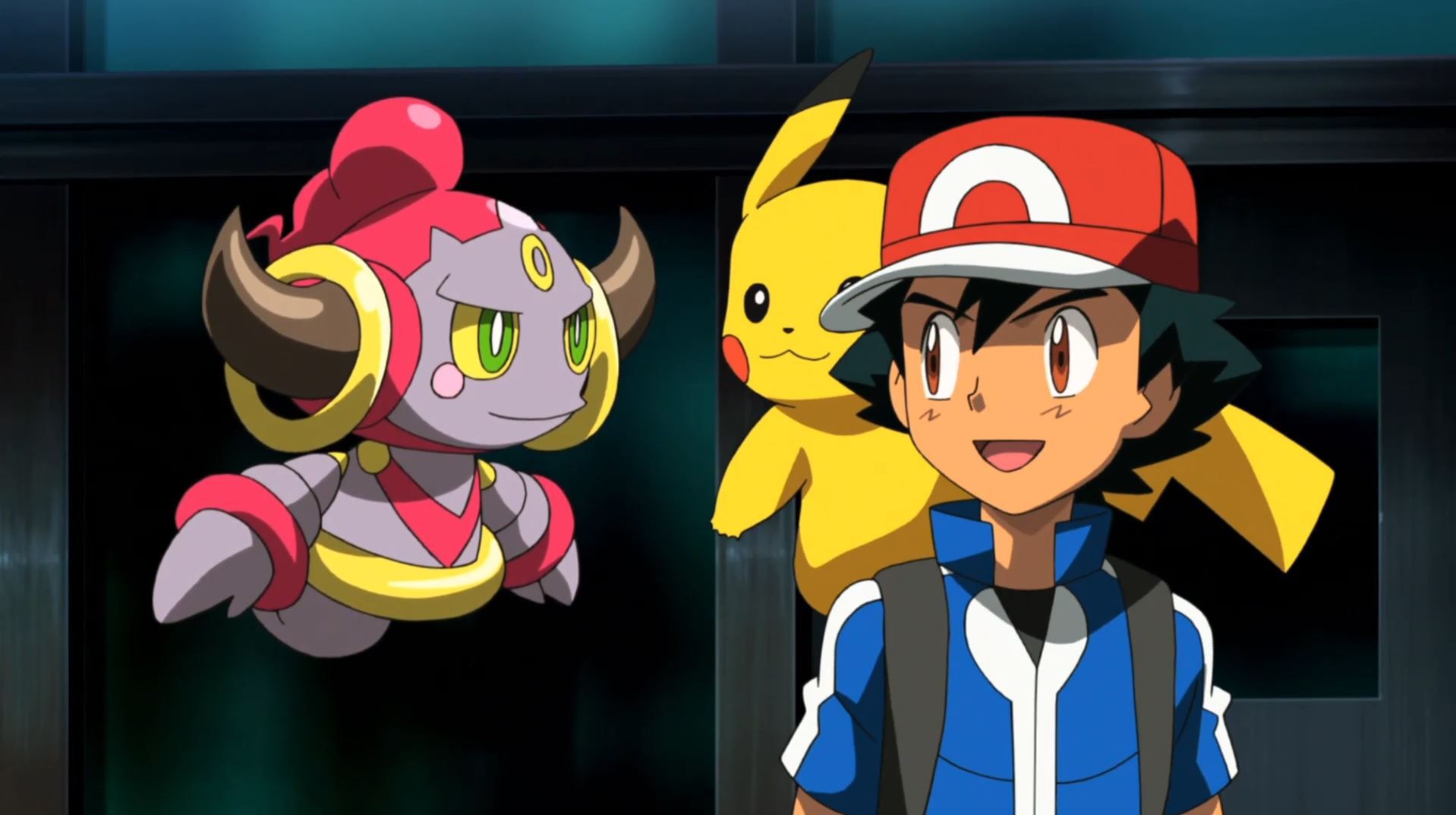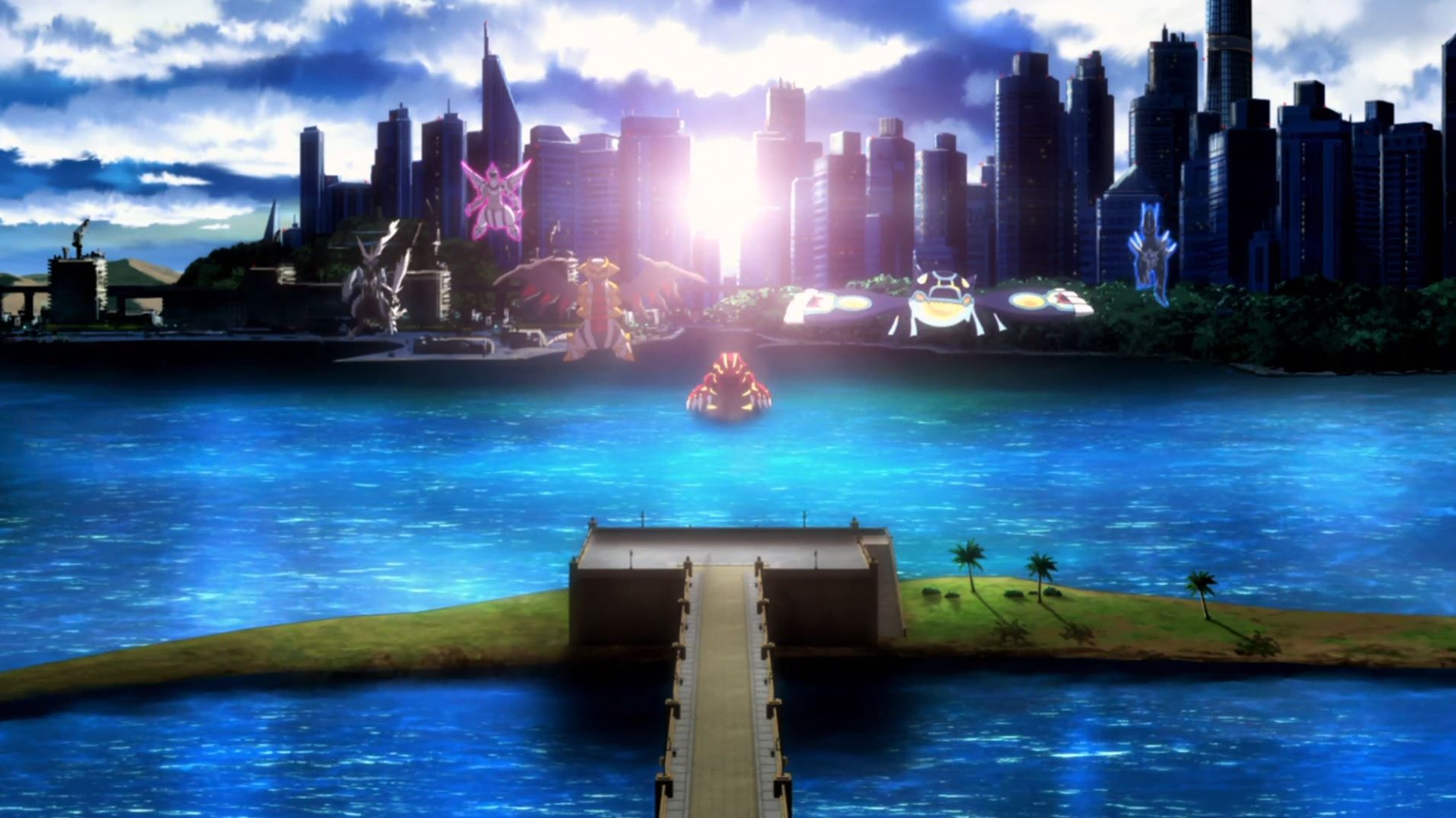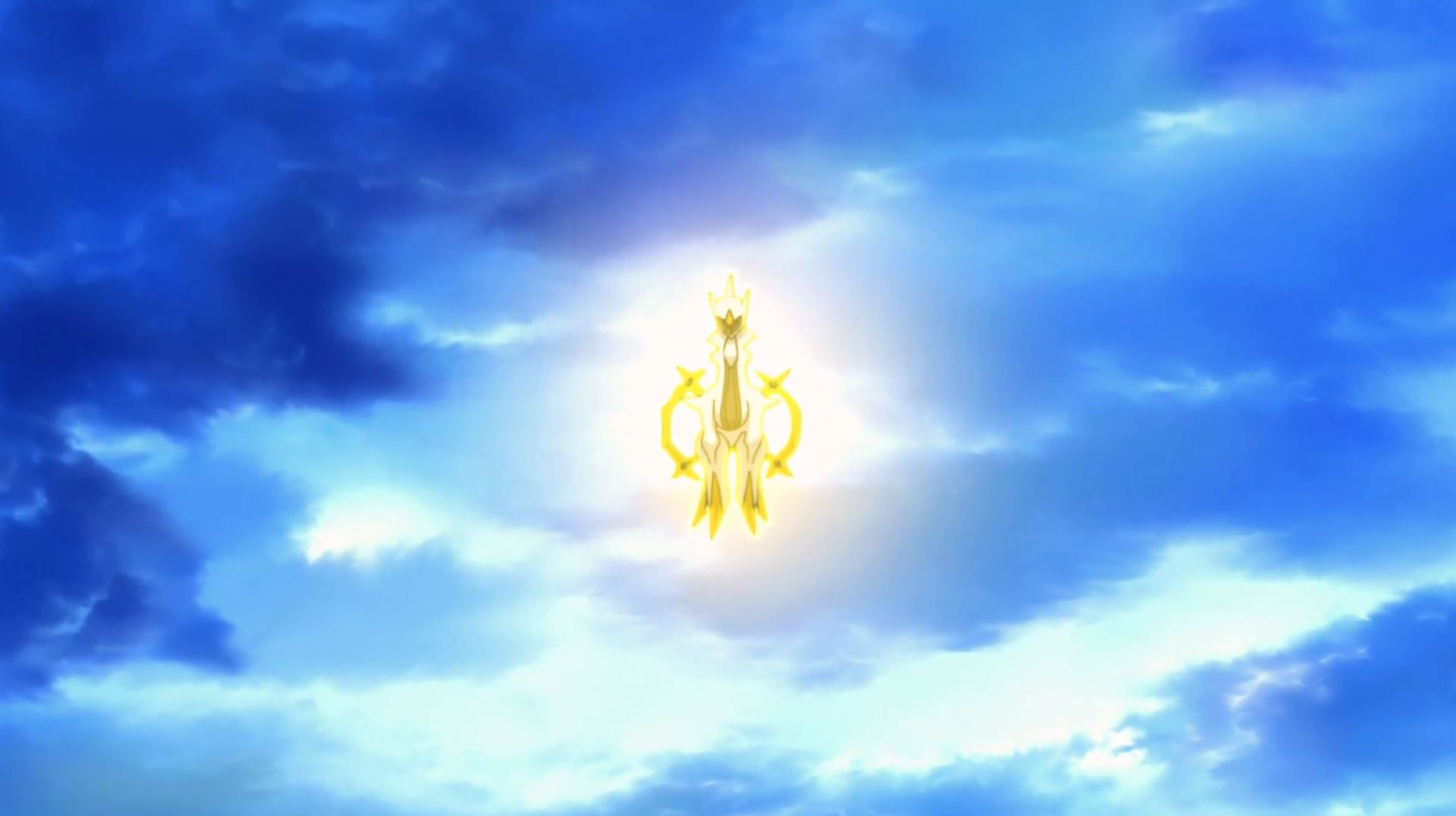Welcome back to Pokemon Movies in Review, a weekly recap of the entire Pokemon cinematic universe. This week we’re revisiting Hoopa and the Clash Of Ages, the second movie in the X & Y generation and the first to be written by Atsuhiro Tomioka, who later went on to write Volcanion and the Mechanical Marvel as well as this year’s Secrets of the Jungle. Tomioka injected Clash of Ages with some much-needed fan-service while elevating the series far above the past few entries with strong characters and interesting themes. While the one hour and 15 minute runtime is mostly filled with Legendary Pokemon blasting laser beams at each other, Clash of Ages still manages to explore themes of resentment, humility, family, and faith, and synthesizes those ideas into something that vaguely resembles a point – a rare accomplishment for a Pokemon movie. With more than a dozen Legendary Pokemon facing off, it’s essentially the Avengers: Endgame of the Pokemon universe. This is the most rewarded I’ve ever felt as a loyal fan of the Pokemon series, and it's easily one of my top five favorite Pokemon movies so far.
Clash of Ages begins in medias res with Hoopa in its unbound form battling the Legendary Pokemon Groudon, Kyogre, Regigigas, Reshiram, and Zekrom. Though Hoopa easily defeats every contender, a small nearby desert village takes serious collateral damage. Emboldened by its victories and its limitless power, Hoopa unleashes a cyclone on the village that starts to tear it apart. A man steps forward with a magic bottle and invokes the ‘light of confinement’, sapping away the Djinn Pokemon’s power and trapping it in the bottle.
As we later learn, Hoopa was once a beloved patron of the village. Its portal rings appeared over the village one day as Hoopa reached through them to steal some bread. The villagers demanded restitution, so Hoopa delivered an endless shower of gold that allowed the village to prosper and eventually develop into the Dubai-esque city of Dahara. Hoopa stayed in Dahara City because the people fed it delicious food, and in return it granted their wishes with its portal rings. One day, the people asked Hoopa to show them its strength in battle. After brutalizing a Dragonite, Hoopa became obsessed with power, believing that it was undefeatable and, in its own words, could do anything. Hoopa’s rampage eventually got so out of control that a man named Ghris borrowed power from Arceus to create the prison bottle so he could trap Hoopa’s power.
In its confined form, Hoopa was cared for by Ghris, and eventually his grandchildren Meray and Baraz. Without its unbound Power, Hoopa was no longer able to hurt Dahara City. This meant it also could not travel through its portal rings, though it could still summon people, Pokemon, and objects through the portals. Ghris tried to teach Hoopa that the world was bigger than itself, but after 100 years, Hoopa still believed it deserved power and that it was capable of doing anything.
Having grown up with Hoopa, Baraz eventually came to believe that Hoopa might be ready to get its power back. After a chance meeting between Meray, Hoopa, and Ash’s party, Baraz retrieves the Prison Bottle – only to be overcome by Hoopa’s trapped power. The possessed Baraz opens the bottle, transforming Hoopa back into its unbound form, and it immediately starts to unleash destruction on the city. Using the power of Arceus handed down to them by their grandfather, Baraz and Meray managed to trap Hoopa’s power in the bottle. Unfortunately, it doesn’t take long before Team Rocket’s meddling causes the bottle to break, unleashing Hoopa’s power once again. Hoopa is able to resist transforming, but its power has become so rageful after years trapped in the bottle that it becomes its own shadow version of Hoopa. As the heroes race to create a new Prison Bottle, Ash and Hoopa face Shadow Hoopa head-on, each side recruiting Legendary Pokemon from throughout the film series to battle with them.
The relationship between Hoopa and its power is complex. Hoopa can not learn to control its power because having access to it is so catastrophic. The corruptive nature of power is abstracted here such that power itself is corrupt. Hoopa lost its power because it failed to show humility, and while learning that lesson is necessary, it isn’t sufficient. Before Hoopa can self actualize and learn to wield its power without pride, it also has to reconcile with its resentment towards the people who took its power away. After remaining bottled up for 100 years, Hoopa’s rage took on a life of its own, carving a path of destruction that threatened both Hoopa and the people that had become its family. Clash of Ages is about overcoming your flaws and growing as a person, but it's also about dealing with the resentment we have towards the people that showed us our flaws in the first place. As Shadow Hoopa demonstrates so beautifully, we can’t keep our resentments bottled up and expect them to just go away.
As I mentioned before, most of the runtime is taken up by the most buckwild Pokemon battle you’ve ever seen. To defend itself from the enraged Shadow Hoopa, Confined Hoopa summons Shiny Rayquaza, Latios, and Latias to fight alongside itself and Ash. While Shiny Rayquaza is a different Rayquaza from the one scene in Destiny Deoxys, we do see Latios and Latias get pulled from Pokemon Heroes’ Alto Mare – not the Latios that sacrificed itself to save the town, but the offsprings of Ash and Latias that were born at the end of the movie. This is canon. Lugia also appears, bursting through the ring portal in a stream of water, which suggests that it was summoned from beneath the ocean and is in fact the same Lugia from Pokemon 2000.
Shadow Hoopa in turn summons Primal Groudon, Primal Kyogre, Kyurem (from its home in Sword of Justice), Giratina, Dialga, and Palkia. All the Legendaries clash in the center of Dahara City in the most bombastic Pokemon battle of all time. When Shadow Hoopa’s team combines its power to unleash a concentrated blast on the heroes, Rayquaza, Latios, and Latias emerge unscathed and mega-evolved. This prompts Shadow Hoopa’s team to mega evolve as well, and the whole fight gets turned up to 11. After 19 movies, I thought I’d seen enough Dragon Pulses and Hyper Beams to last a lifetime, but I was glued to the screen throughout this entire battle. It's excessive, but I have to admit it’s a lot of fun.
Baraz manages to recreate the Prison Bottle and trap Shadow Hoopa in it momentarily, but at this point Hoopa’s rage is too powerful to be contained. As Ash holds the bottle and tries to control the monster for as long as he can, Hoopa is finally able to process its resentment and let go by showing Shadow Hoopa its life and how it found a family among the people that took its power away. Though Hoopa forgave them long ago, its anger was still there, trapped in the bottle. By confronting it directly, Hoopa was finally able to let go of its rage and cleanse its power. Of course, Hoopa still has one challenge to overcome: the hubris that caused it to lose its power in the first place.
Everyone thinks the danger is behind them, but a tear in space-time starts to consume part of the city. Baraz surmises that summoning so many legendary Pokemon has warped reality, which is a reasonable theory, considering what happened to Alamos town the last time Dialga and Palkia clashed. Hoopa is able to evacuate everyone to safety through its portal rings, but it still can’t pass through them itself. As the city is almost entirely consumed, a beam of light shoots down from the heavens and freezes the rift. Arceus, in a literal deus ex machina, appears in the sky to teach Hoopa to be humble. If you have to resolve a plot quickly by making the hero learn an important lesson, I have to admit that having God appear to them is an effective way to do it. Hoopa finally loses its “I can do anything” attitude in the face of God – who can actually do anything – and regains its ability to pass through its own portals. The movie ends with the Legendaries returning to their homes while Hoopa promises to stay and fix the mess it made in the city. It’s not the cleanest parable to be certain, but by Pokemon movie standards it's pretty remarkable.
I have a few more stray thoughts this week:
- As Ash tries to yank Hoopa through its portal, he urges the Pokemon to just believe in itself. I’m glad that didn’t end up being the thesis here as it is in so many other Pokemon movies. I also appreciate that that’s the only lesson Ash has ever learned, so of course he thinks that’s what Hoopa needs to hear. The point of the movie seems to have gone over Ash’s head, but I think that’s appropriate. Kneeling before God is a pretty heady concept for a little boy.
- Team Rocket actually does something in this movie by breaking the Prison Bottle. I need to look back at the series and see if there’s a correlation between the good movies and the movies where Team Rocket is involved in the plot. There must be a connection.
- I know some people got mad that I read the baby Latios and Latias at the end of Pokemon Heroes as Ash’s children, but I stand by it and I think it's just as valid as any other read. That his children show up to fight alongside him here just makes this theory even better.
- We demand justice for Ho-Oh.
Next week is Volcanion and the Mechanical Marvel, the final film in the original Pokemon movie series. Now that I know it has the same writer as Clash of Ages, I have high expectations for the final X & Y movie.
Source: Read Full Article



